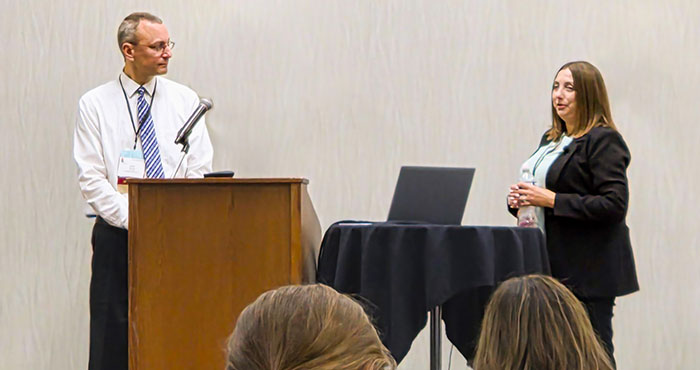Minnesota Paid Leave: What Employers Need to Know Before 2026
Minnesota has enacted a statewide Paid Leave program that combines paid family leave and paid medical leave, bringing major changes to payroll, HR...
4 min read
 Redpath and Company
:
December 9, 2021
Redpath and Company
:
December 9, 2021

December 9, 2021 - The long-term success of a nonprofit depends heavily on the board of directors. These are the people who establish the mission, set goals, hire executives, and ultimately are responsible for the financial stability of the organization.
Building a board that delivers results can take years and is an ongoing process throughout the life of an organization. Approaching the task can be split into two very large buckets: selecting the right people, and setting them up for success.
The first part, getting the right people onboard, includes finding talent, assessing prospects, valuing diversity (of all kinds), and landing commitments. The second part deals with how you structure your board, what tools you give them, what expectations you place on them, and how you support them.
When you think about the diversity of your board of directors, consider both internal and external qualities. A study of Fortune 500 companies found those with diverse boards in terms of race, gender, and age performed better financially during the pandemic. A similar study of nonprofit boards found diversity is linked to greater fundraising success and advocacy engagement.
Diversity of thinking and talent is also critical in building a nonprofit board. Of course, you want people who believe in the mission, but you don’t want 100% uniformity in your thinking. You also don’t want people who all travel in the same social or professional circles. This will limit your potential to make new connections and bring new people along in supporting your mission.
From a fundraising standpoint, more and more foundations and corporations that give to charities are asking nonprofits how they engage the people they serve in leadership and decision making. Grant applications often ask about the racial diversity of the board of directors and whether people with lived experience help inform program development.
People with financial backgrounds are extremely valuable for any nonprofit board. The same goes for anyone who has a legal background. The experience these people will have from their professional lives will certainly transfer over to the nonprofit world.
To further assess the types of people you need on your board, look at your nonprofit’s revenue streams and try to match those up with professionals in that field. For example, if you run a thrift store, you want someone with retail experience. If your focus is healthcare, make sure you have medical professionals involved. A housing nonprofit should go after executives who work for developers.
Engage your board and staff in identifying potential board members all the time - not just when someone’s term is about to end. Keep a prospect list and engage potential board members often.
When you’re talking to a potential board member, be very clear about the expectations you’ll place on them. Tell them how long the term will be. A commitment of at least two years is important (three is better). Explain to the prospect why you think they’re a good fit and what you’ll want them to do once they join. Having a strong board structure already established will help with these conversations.
At a minimum, you want to have these four executive officers: Chair/President, Vice Chair/Vice President, Secretary, Treasurer. Boards that utilize committees are more efficient because it allows for work to be delegated and done outside of the valuable time dedicated to full board meetings. At the very least, you should have committees that cover:
The committees you need beyond these depend on your unique needs as a nonprofit. They could include:
An audit committee (or an audit subcommittee of your finance committee) is a best practice for larger nonprofits. Minnesota requires a nonprofit with revenues over $750,000 per year to have an audit conducted by an independent CPA. You can find CPAs who specialize in helping nonprofits. Independent auditors can help fill out the IRS Form 990 required of nonprofits. It is very important your board of directors reviews the 990 and verify the information in it is accurate.
Have written policies about how you will handle the creation of the annual budget as well. Make sure the board approves the final budget, so everyone is aware of the plan. Compare the previous year’s budget to the actual financial statements so you can see how closely you are tracking against what you had intended.
There are several financial ratios that are worth tracking in order to understand how you’re doing from a sustainability perspective. This includes fundraising efficiency. You should look at how much you are spending versus how much money is coming in. What does it cost to raise a dollar? Say you put on a gala dinner that raises $100,000 but costs $85,000 to do it. That’s probably not a good use of everyone’s time and energy compared to a fundraising email campaign targeting your best supporters.
A higher-level ratio to track very closely is the organization’s overall debt to assets ratio. Taking on too much debt can crush a nonprofit very quickly.
Whether they like it or not, every member of a board of directors at a nonprofit must think of themself as a fundraiser of sorts. That doesn’t mean they have to ask all their friends for gifts all the time. But it does mean they need to consider the nonprofit’s revenue streams and how they can support them. The most obvious is through giving money, and many funders like to see that 100% of the board of directors at a nonprofit made gifts within the last year. However, a board should also look at all the ways a nonprofit brings in revenue.
“Revenue diversification is important to think about,” says Joe Khawaja, CFO at Twin Cities Habitat for Humanity. “At Twin Cities Habitat, we fundraise, sell mortgages, service mortgages, and operate ReStore ‘home goods improvement’ outlets. For other nonprofits, my advice will be to not just look at fundraising but have at least three to four different avenues, where you could generate income and minimize risk and dependency on only one source of income.”
Joe’s advice is also to watch the cash on hand number closely. You want to have several months worth available, so a surprise expense does not threaten your entire organization.

Minnesota has enacted a statewide Paid Leave program that combines paid family leave and paid medical leave, bringing major changes to payroll, HR...

Over the last few months, Redpath professionals have been presenting, teaching, and trading ideas with leaders across the government accounting...

For search fund entrepreneurs, acquiring a business is both thrilling and uncertain. Unlike private equity firms seeking portfolio growth or...